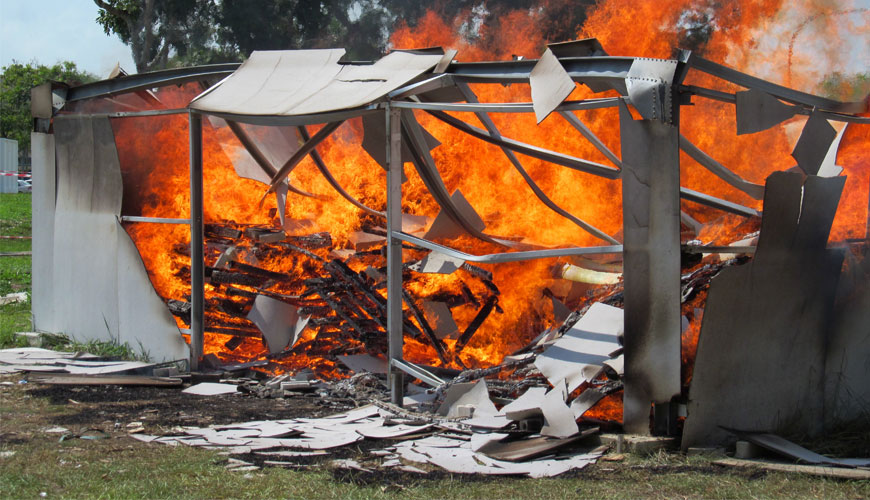

EUROLAB laboratory provides testing and compliance services within the scope of DIN 4102-4 standard. This part of the DIN 4102 standard specifies requirements for building materials, elements and components classified according to their behavior.

It is not necessary to further verify the fire behavior of building materials, elements and components that meet the requirements specified in this standard. The information given in this standard relates only to building materials, elements and components whose properties can be evaluated on the basis of the above-mentioned standards.
The fire behavior of elements and components not covered by this standard should be verified by testing according to DIN 4102-1 to DIN 4102-3 or DIN 4102-5 to DIN 4102-8; See building codes a guide for approval requirements.
The requirements set out in this standard apply only to the fire behavior of building materials, elements and components. Other requirements for other parameters (eg minimum dimensions, concrete pavement, moisture protection, thermal insulation and sound insulation) are contained in other relevant specifications or regulations.
The length of time a building element/component is fire resistant is a function of:
The above factors were taken into account while determining the fire resistance classes for each element/component.
Where minimum structural member/component dimensions are specified as a function of stress, linear interpolation can be used to obtain intermediate values for wall thickness, beam width and depth, and column thickness.
The fire resistance of the combined elements and components is assumed to be at least in the same fire resistance class of the building elements/components connected to those classified according to the system presented in this standard. For example, a beam can only be assigned a specific fire resistance class if its supports (for example, cantilevers, columns or walls) and any structural bracing systems are of the same grade or higher.
The building material classes referred to in this standard shall apply only to the materials or composite building materials specified herein. Other composite materials (eg composites of class A or class B materials and class B materials as defined in DIN 4102-1) may exhibit a different fire behavior and are therefore assigned to another class.
Among the services provided by our organization within the framework of material testing services, there are also DIN 4102-4 standard tests. Do not hesitate to contact our laboratory EUROLAB for your testing and certification requests.
To get an appointment, to get more detailed information or to request an evaluation, you can ask us to fill in our form and reach you.